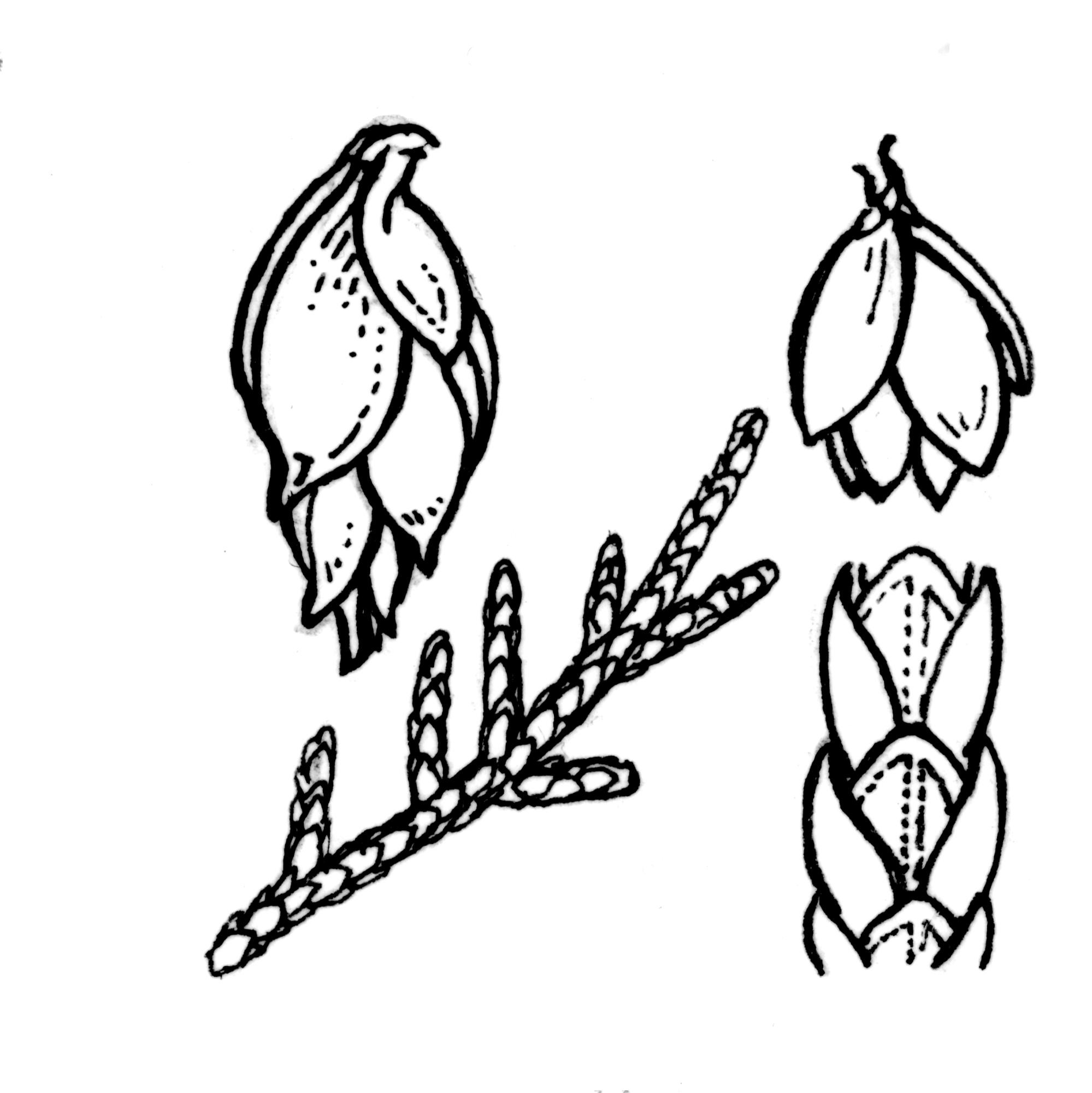
Greek mikros - small, Biota - a former name for Thuja.
Evergreen trees or shrubs. Bark thin, reddish, peeling in strips or scales. Leading shoot erect. Branchlets arranged in flattened horizontal sprays, aromatic when crushed. Scale leaves overlapping in opposite and differing pairs, the facial leaves ovate and pointed, lateral leaves folded over the facials and ridged. Male and female cones on the same tree, terminal and solitary. Male cones mostly reddish and shortly cylindric on separate branchlets from female cones. Female cones at the end of previous year's growth, 8-16 mm long, erect; scales hinged at the base, mostly thin, in 3-8 almost flat overlapping pairs. Seeds winged around the edge, 2 or 3 on each fertile scale, maturing in one year.
5 species from China, Japan, Taiwan and North America.
A source of commercial timber; the leaf oils are sometimes used medicinally. The common name Arbor Vitae (Tree of Life) refers to the one-time use of the bark by sailors to brew a tea rich in vitamin C used as a remedy for scurvy.
Leaves with white to pale green banding below, strong-smelling when crushed; cones flask-shaped but not strongly waxy white; cf. Platycladus orientalis.
Source: (1995). Cupressaceae. In: . Horticultural Flora of South-eastern Australia. Volume 1, Ferns, conifers & their allies. The identification of garden and cultivated plants. University of New South Wales Press.
